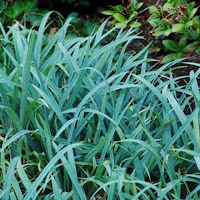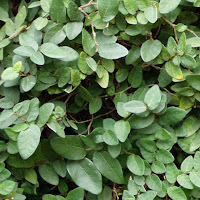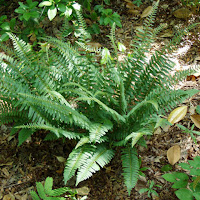And how to attract them
For a type of blackbird, orioles are exceptionally colorful. Bright yellow, orange to chestnut colors contrast beautifully against black plumage punctuated with splashes of white.
There are nine species native to North America – Baltimore Oriole (Icterus galbula), Orchard Oriole (Icterus spurius), Bullock’s Oriole (Icterus bullockii), Hooded Oriole (Icterus cucullatus), Scott's Oriole (Icterus parisorum), Audubon's Oriole (Icterus graduacauda), Altamira Oriole (Icterus gularis), Spot-breasted Oriole (Icterus pectoralis), and Streak-backed Oriole (Icterus pustulatus). Their ranges sometimes overlap, so it’s possible to observe one or more of them in your area.
Baltimore Oriole
The Baltimore Oriole is the most famous by far, if not for its abundance then certainly because of the Major League Baseball team that bears the name. But the bird was here first. They’re so named because their colors are similar to the heraldic crest of the Calvert family and Lord Baltimore, after whom Baltimore, Maryland is named.
Its head is black, breast is orange, and white patches adorn the wings. As with many bird species, the difference between male and female colors is usually quite different – the males normally sporting brighter colors.
They range from eastern British Columbia to Nova Scotia, southward through Texas to Central America, Florida and Cuba. Their breeding range is from Canada to Louisiana, Alabama and Georgia. They overwinter in the warmest climates south of the U.S. border. In the United States, we’ll hear them early in spring high in the trees where they’re searching for insects and nesting materials. Their nests dangle from tree branches.
Orchard Oriole
The Orchard Oriole is slightly smaller than the Baltimore Oriole, and its range is a bit smaller, too. Nevertheless, it can be found in spring from southernmost Manitoba and Ontario, southward through Texas to Mexico, and eastward from Maryland to North Florida.
Its head is black, and breast color is a darker chestnut. It lacks the large white wing patches of the Baltimore Oriole.
It’s mostly found in shrubs and orchards, particularly near water sources. They hang around for a briefer period during breeding season – arriving in late spring and leaving by mid-summer.
Bullock's Oriole
Bullock’s Oriole sojourns in the west. It ranges from southernmost Alberta and Saskatchewan to California, through Texas and into Mexico. They can be found in open woodlands, and shrubs and trees near water sources, which are especially needed in the arid southwest.
The crown of the head is black and bright orange with a black stripe across the eye. The breast is also orange. White patches and streaks adorn the wings.
Hooded Oriole
The Hooded Oriole ranges further west, from California to Nevada, southward through Texas and Mexico. They can also be found in open woodlands and yards, especially among palms from which they find nesting fibers. They actually hang their nests among the fronds to avoid detection.
Their wings, backs and tails are black, as are the lower half of their faces. Their breasts and heads range in color from bright yellow to bright orange. White streaks on their wings.
Scott's Oriole
Scott’s Oriole travels from southernmost Idaho and easternmost Nevada through Colorado, New Mexico, Arizona, Texas and into Mexico. It frequents deserts and mountain slopes, flitting and flirting among yuccas, pines, palms and junipers.
Scott’s Orioles have black heads, backs and wings streaked with white. Breasts and bellies are lemon-yellow.
Audubon's Oriole
Audubon’s Oriole is very much like the Scott’s Oriole, but does not have the black back. It’s doubtful that you’ll spy them very often. They live in southernmost Texas and in limited regions of Mexico. They’re rather shy creatures, searching among brush and woodlands for insects. If you see one, consider yourself lucky.
Altamira Oriole
The Altamira Oriole is another you’ll rarely see unless you live in the Texas Rio Grande region. Their heads are bright orange. They sport black masks and a black streak down the center of the breast. Backs, wings and tails are black with white streaks.
Look for them in parks, open woodlands, and high branches in trees near water. As with other orioles, their nest can be seen dangling from heights.
Spot-breasted Oriole
Spot-breasted Orioles inhabit a very limited range in the United States in eastern Florida from Cape Canaveral to Miami, only because they were introduced there sometime after World War II. Otherwise, they’re native to the lower western coast of Mexico and into Central America.
They’ve become somewhat common in Florida. They look very much like the Altamira Oriole, but have black spots on the breast spreading toward the wings.
Streak-backed Oriole
Streak-backed Orioles visit the southwestern United States, but are mostly found in western Mexico and southward into Central America. It’s flame orange on its head, belly, breast and back. A black streak marks its breast and black streaks run down its back. Its tail is black. White streaks adorn its wings.
You may find them in arid grasslands, open woodlands and shrubs. They are very much attracted to various mimosa plants, which are rich in nectar, so homeowners in those areas would plant them to attract these avian gems.
Which brings us to the next subject.
How to attract orioles.
Photo credit: Lori Meehleder
If you build it, they will come...maybe.
It just so happens that most orioles are suckers for sweet fruits and nectar. Yes, they eat insects, but they adore sugar.
Dark and brightly colored fruits, in particular, attract their attentions. Oranges, blackberries, raspberries, blue and purple grapes, plums, blackberries, raspberries, red cherries and crab apples will keep them coming back. You can provide them in feeders, or better still, plant a few shrubs and trees in your yard!
Split oranges in half and secure them on nails or dowels. Chop up pieces of apple to present in bowls or shallow cups. Do the same with grapes and berries. Would you like to provide an opulent feast? Put a few dollops of grape jelly in the bowls.
Nectar rich flowers such as Trumpet Vine will entice them. Not only is the nectar sweet, but the color is just right, too – bright orange and red.
Those orioles that are native to the Southwest and South will also feed on yucca flowers. Yucca plants are very drought-tolerant, too. They’re perfect for xeriscaping, whether of necessity or simply to save on your water bill.
Since they’ll drop in to feed, why not provide the orioles with nesting materials. Oriole nests are complex things, sort of like dangling purses to hold their young. Fibrous plants will do the trick. Palms and yucca plants are very fibrous. Southerners should be able to grow them with ease. In colder regions, orioles will make good use of long grass blades, hair, threads and string, even plastic strips. Though it’s best not to leave plastic blowing around, it’s good to know that errant pieces can be used for good.
Orioles are certainly some of the most colorful bird species of North America, and they’re more interesting to birders because they don’t hang around very long in their breeding areas. So, be prepared for their coming in the spring. Purchase your oriole feeders, buy grape jelly (!), plant your fibers and save string for the next season so you can enjoy these exotic-looking creatures while they last.
Return to GoGardenNow.com.














